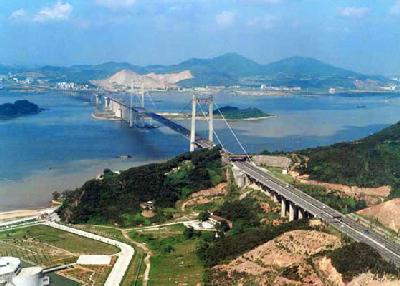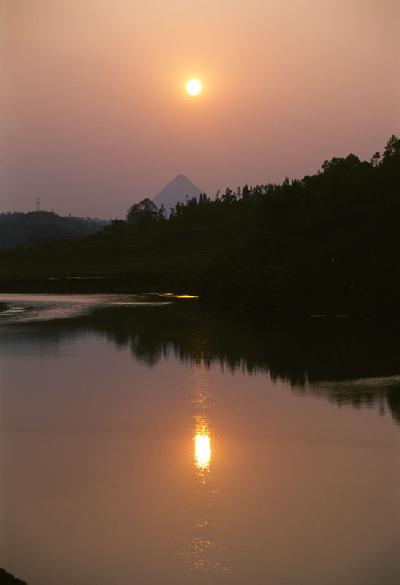The Pearl River is the 3rd
largest river in China, just next to the Yangtze River and the Yellow River. The
Pearl River originally meant the river segment from Guangzhou City of Guangdong
Province to the Dongjiangkou Estuary, but the water system was subsequently
called the Pearl River. The current so-called Pearl River valley includes the
broad drainage area of Xijiang, Beijiang, Dongjiang and Pearl River Delta. The
total length of the main trunk and branches is about 11,000 kilometers, with a
total drainage area of 452,600 square kilometers. As the conditions of nature
and human culture are more predominant, it can match other rivers in rich
produces and prosperous economy. The Lingnan Culture (culture at the south of
the five ridges, mainly Guangdong and Guangxi) gestated by the Pearl River plays
a very important role in China's culture system.
The Pearl River successively flows
across six provinces of Yunnan, Guizhou, Guangxi, Guangdong, Hunan and Jiangxi.
94.5% of the Pearl River reaches are mountainous regions and hills. Lime rocks
are distributed in some places in the reaches. Eroded by surface water and
ground water for a long time, those lime rocks form the karst topography with
different appearances. Some tall and straight stone peaks stand upright on the
flat ground, while some stone peaks connect in groups and further form various
strange shapes. The inner part of the water-eroded cave is just as the
labyrinth, and the stalagmites and stalactites are in thousands of postures,
making the natural sights of the areas along the Pearl River very
attractive.
There are about 250 species of fishes in the
water system of the Pearl River, including the special local fish (dace,
anguilla marmorata, ratmouth barbell, etc.) and the common carp, golden carp,
bream, herring, grass carp, silver carp, bighead and mandarin fish, etc. In
addition, there are plenty of corb shells, blue crabs, sand shrimps and the
manually cultured oysters at the downstream Estuary of the Pearl River Delta.
This delta is a developed area of freshwater aquiculture in China. Moreover, the
Pearl River abounds in hydraulic water resources.


